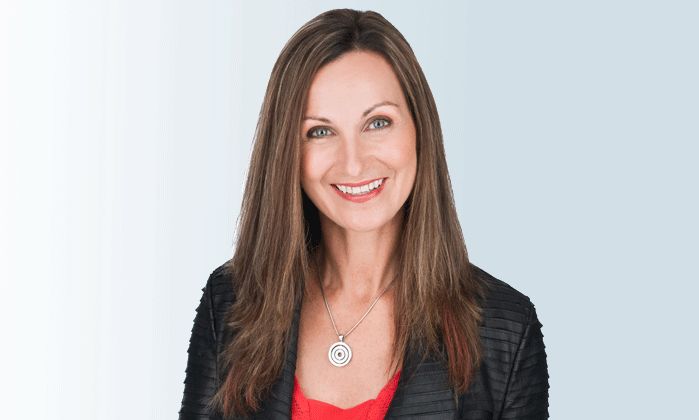
Judy Fitzepatrick
Have you ever wanted the benefits social media can provide, but don’t have the time to sit in front of your computer and develop those social media channels? Judy Fitzepatrick, B2B Marketing Expert and Founder of The Client Getting Engine uses social media tools to help automate time consuming repetitive processes, enabling her to generate more leads and sales for time stressed Financial Services professionals.
Who is your ideal client, who do you help?
I help financial advisors who struggle to find the time, desire or know-how to generate engaging conversations, targeted leads and high paying clients on LinkedIn.
What common obstacles prevent the professionals you work with from generating engaging conversations, targeted leads and high paying clients on LinkedIn.
One of the most common issues that people have is not having a proven system for success on LinkedIn.
Secondly, they don’t have the quality time necessary to actually put that strategy into action, or better said, to do the tasks that are involved in that strategy.
Thirdly, if they do have time for it, they still struggle because there’s a consistency involved and the tasks that are required are quite repetitive. It is brain numbing activity and really hard to sustain long term.
It’s the consistency of delivering that strategy that really gets the results on LinkedIn and for that very reason, is what gets in the way of most people not actually achieving great results on LinkedIn.
Share an example of someone you’ve helped with generating targeted leads on LinkedIn.
One of my clients owns a professional telemarketing service, and when we got together she only had 160 connections on LinkedIn, but she actually hadn’t been on LinkedIn for about 2 years, so her profile and account was completely dormant.
When I went through her profile, it was very deficient. There was very little information in it, not even a link to her website. Together we did a complete makeover to create the profile that really spoke to her ideal audience and implemented that on her profile.
Next, we had a consultation with her to discover who she really wants to target on LinkedIn and went through the keywords, the industries, the titles, and so on, the groups that they would be in, and then we implemented the strategy for her.
I believe I started with her 4 months ago, and not only did she re-stimulate the relationships with existing connections, but that has turned into, I believe, 3 or 4 new clients to date, that on average are worth $1,500 to $2,000 per month that she has landed as a result of our efforts on LinkedIn.
She’s pretty excited about that. Prior to this, she was doing absolutely nothing with her LinkedIn account.
What are some of the misconceptions that people may have about using LinkedIn?
I think a lot of people believe that it is a prerequisite for businesses to have a profile on LinkedIn. Then there’s the other crowd who believe it’s more about posting a professional resume, or it’s just for job hunting and they’re not looking for a job.
They don’t realize that every possible client or customer that they could ever want is probably on LinkedIn, and so they’re not looking at it for the source of the majority of their business, and that is the actual potential with LinkedIn that they just don’t realize.
Why do people believe that LinkedIn is just for jobs and posting resumes, where do you think that came from?
It’s because the style that most people seem to present themselves on LinkedIn is more of a resume format, which really isn’t the right way of doing it, but LinkedIn is very effective for job hunting. There are a lot of recruiters on LinkedIn that are looking for talent for various positions, so they do look for that.
A lot of people are looking for a job so they don’t think they need to be very active on LinkedIn. It’s very effective for job hunting, but it’s also very effective for targeting and getting more customers.
It’s very important to make that clear distinction between somebody who’s actually looking for employment and somebody who’s a professional looking to do business and network with other entrepreneurs.
What are some of the unknown pitfalls that people should be aware when using LinkedIn?
If you’ve got the time and a strategy you absolutely can do it yourself, but there’s a definite need to understand that you should build out your profile in a way that clarifies the services you provide and who you help. It’s more about speaking to the audience that you help, than talking about you. That’s definitely one of the pitfalls that people should be aware of.
Another point to be aware of, which a lot of people miss, is not clarifying who your ideal prospect are, and in turn, not positioning your profile to speak to them. A lot of profiles are simple and deficient in the content that really speaks to their ideal audience.
Any other pitfalls that you come across, or that people should be aware of?
Absolutely. I get this all the time too. It’s when people connect with you and you respond to them. A lot of times people start off this new relationship with a new connection by talking all about themselves, pitching, reaching out and trying to do business with a new connection.
It’s not about you. It’s about discovering your new connection and how you can help them. I think that’s a big mistake that people make. They get all commercial right out of the gate, rather than developing a relationship on LinkedIn that can lead to something really special.
What’s wrong with that wanting to get the word out about what I do?
It’s like going on a date. Deep down, you would like nothing more than to get married one day. You like your new date that you’re out with, but of course you don’t make a marriage proposal that first time out, right?
It’s no different on LinkedIn. It’s all about that, “Know, like, and trust factor” we all hear about.
You get to know the person, you present yourself. You have to develop some trust and prove that you are the professional they would want to do business with. You absolutely must show that you’re interested in solving their problems and being of service to them. I think that’s key.
The other thing is trying to take business forward on LinkedIn. LinkedIn is not a CRM, so it’s really hard to track.
If you’re having a conversation on LinkedIn and it looks like this is a potential prospect for you, you need to take that next step of your sales process off of LinkedIn. When you’re connected with people on LinkedIn, of course you get access to their contact information.
A good way of doing that would be to either request a phone call with this person, or send a simple email saying that you are connected on LinkedIn and that you would like to have a conversation with them. Take it forward off of LinkedIn where you’re able to track it to its furthest potential.
Why would you want to take a prospect off LinkedIn? Why not just continue the communication within the LinkedIn platform?
Your communication will continue with them, but as far as tracking and being able to be on top of that conversation effectively, LinkedIn is a very poor content management system (CRM). Truth be told, it isn’t a CRM, so it’s hard to do that on LinkedIn.
By taking your conversation away from LinkedIn you’re in control of that communication professionally. You’ve got a plan to follow up, and it’s much easier to do it off of LinkedIn.
By taking them off LinkedIn, you are separating your highest potential prospects and leads from the rest of your connections on LinkedIn.
Give us some quick-fire bullet points of the most important things someone must look out for when managing their own LinkedIn account.
First of all, you do need to have a professional image of yourself. It needs to be a good professional head-shot, not one off in the distance, blurry, or one that isn’t a recent representation of you.
Next. The headline on your profile really needs to speak to the solutions you provide rather than a title you hold.
Then the summary on your profile, really again, and I’ve said this several times, it really needs to address the services you provide and the solutions you provide. It needs to clearly define who your ideal audience is and how you actually help them, and then there needs to be easy access to how they can reach out and connect with you.
A lot of people are cautious about sharing contact information, but it’s really important that when they want to reach out, connect and possibly become a new customer, that you’re easy to reach. I’ve noticed when I go through my new clients’ profiles, they sometimes have old or broken links to websites where somebody may be looking further into what it is they do.
They click on the link and it goes to a dead page, or maybe to a page that is completely irrelevant to everything else that they’re speaking about in their profile. Keeping all of that in order is really important as well.
Share little bit about your backstory.
Several years ago, back in 2010, I decided that I was going to get serious about LinkedIn. By the way, speaking of unknown pitfalls on LinkedIn and not knowing what I was doing, just prior to that, I was fumbling around and I somehow had accidentally deleted my LinkedIn profile.
I messaged LinkedIn and said, “Oh my God, I don’t know what I did. Can I recover my profile?” Well, I couldn’t, and I had to start over. It was a very frustrating thing, but I started to build my profile and my connections again.
Anyway, it was at that point, I decided I needed some training to use LinkedIn effectively. I came across a wonderful trainer and I still implement a lot of those strategies today.
From what I was learning, I decided to implement a step-by-step strategy and just build my LinkedIn presence and reach out and develop business on LinkedIn, but the challenge for me was that it was really time-consuming.
I was getting business, but it was so hard to be consistent with it. In that process, I became aware of different technologies that I could implement that made that whole process a lot more efficient.
I’m telling you, by using some smart technology, I was able to reduce a three to four hour day job, to maybe 20 minutes to half an hour a day with better results. I started to share my strategies and technologies with other people. From that, I developed the business of being a service provider on LinkedIn.
For myself, I have achieved great results, and it’s been very exciting to learn about and experience through my clients the different kinds of results they’ve been getting in many different fields.
Follow Stewart Andrew Alexander on Twitter: https://twitter.com/stewartalex
